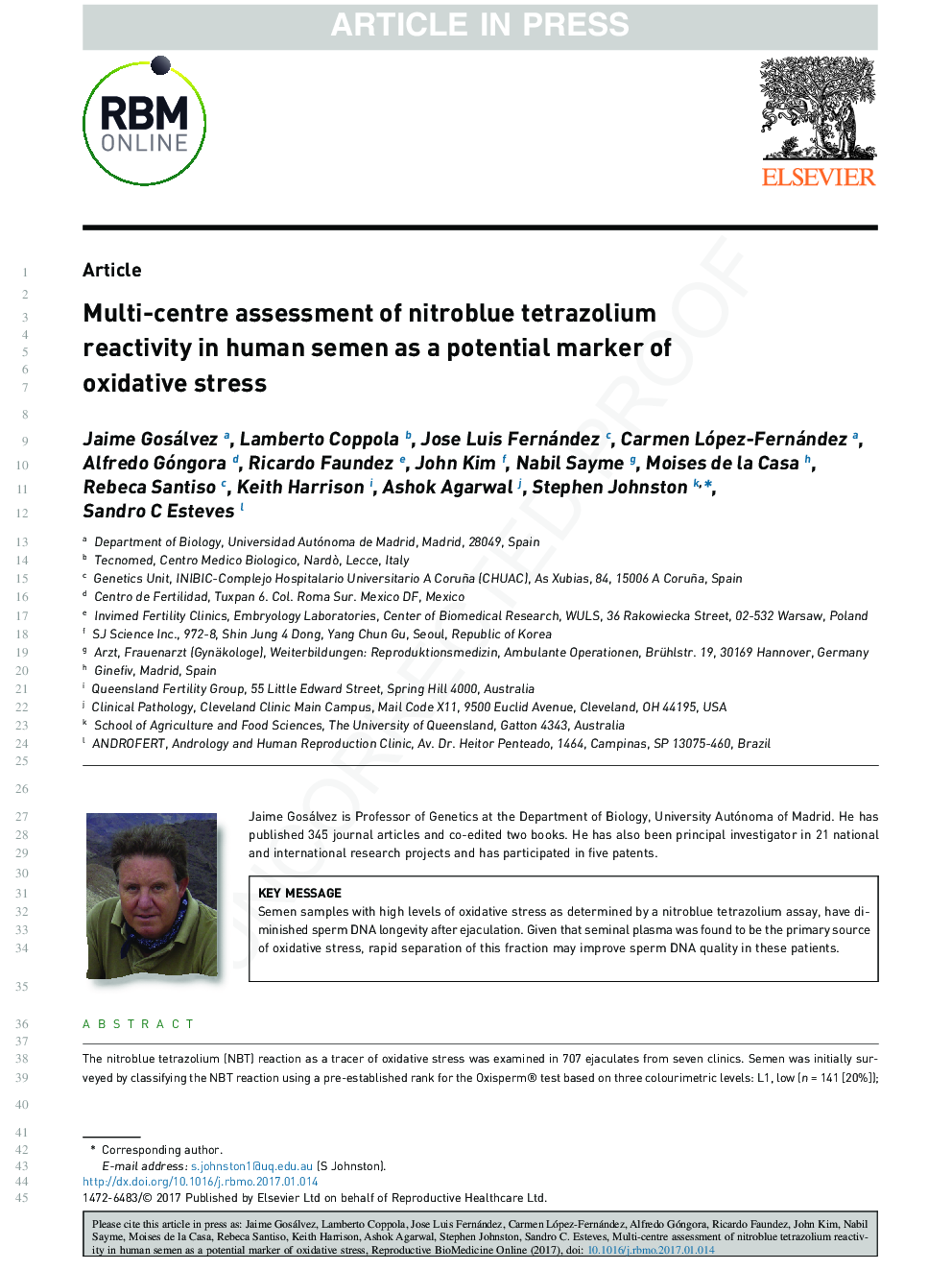| Article ID | Journal | Published Year | Pages | File Type |
|---|---|---|---|---|
| 5696607 | Reproductive BioMedicine Online | 2017 | 9 Pages |
Abstract
The nitroblue tetrazolium (NBT) reaction as a tracer of oxidative stress was examined in 707 ejaculates from seven clinics. Semen was initially surveyed by classifying the NBT reaction using a pre-established rank for the Oxisperm® test based on three colourimetric levels: L1, low (n = 141 [20%]); L2, medium (n = 538 [76%]) and L3, high (n = 28 [4%]). L3 was indicative of a high level of superoxide anions. Halosperm® chromatin dispersion assay was used to analyse samples of ejaculates 30âmin after ejaculation; no difference was found in DNA fragmentation of L1 or L3; L3 category semen samples incubated for 24âh at 37oC showed a significantly faster rate (P < 0.001) of DNA damage than those in L1. The NBT reaction was further characterized in the ejaculates of 100 patients to determine the relative contribution of seminal plasma, spermatozoa, or both. Seminal plasma was the most significant fraction of
- O2â localization, whereas sperm fractions generated detectable reactive oxygen species in only 32% of the ejaculates. Formazan precipitates were primarily associated with the sperm mid-piece and seminal leukocytes; however, not all spermatozoa stained positive to formazan and not all leukocytes presented with equivalent production of superoxide anions.
- O2â localization, whereas sperm fractions generated detectable reactive oxygen species in only 32% of the ejaculates. Formazan precipitates were primarily associated with the sperm mid-piece and seminal leukocytes; however, not all spermatozoa stained positive to formazan and not all leukocytes presented with equivalent production of superoxide anions.
Related Topics
Health Sciences
Medicine and Dentistry
Obstetrics, Gynecology and Women's Health
Authors
Jaime Gosálvez, Lamberto Coppola, Jose Luis Fernández, Carmen López-Fernández, Alfredo Góngora, Ricardo Faundez, John Kim, Nabil Sayme, Moises de la Casa, Rebeca Santiso, Keith Harrison, Ashok Agarwal, Stephen Johnston, Sandro C. Esteves,
